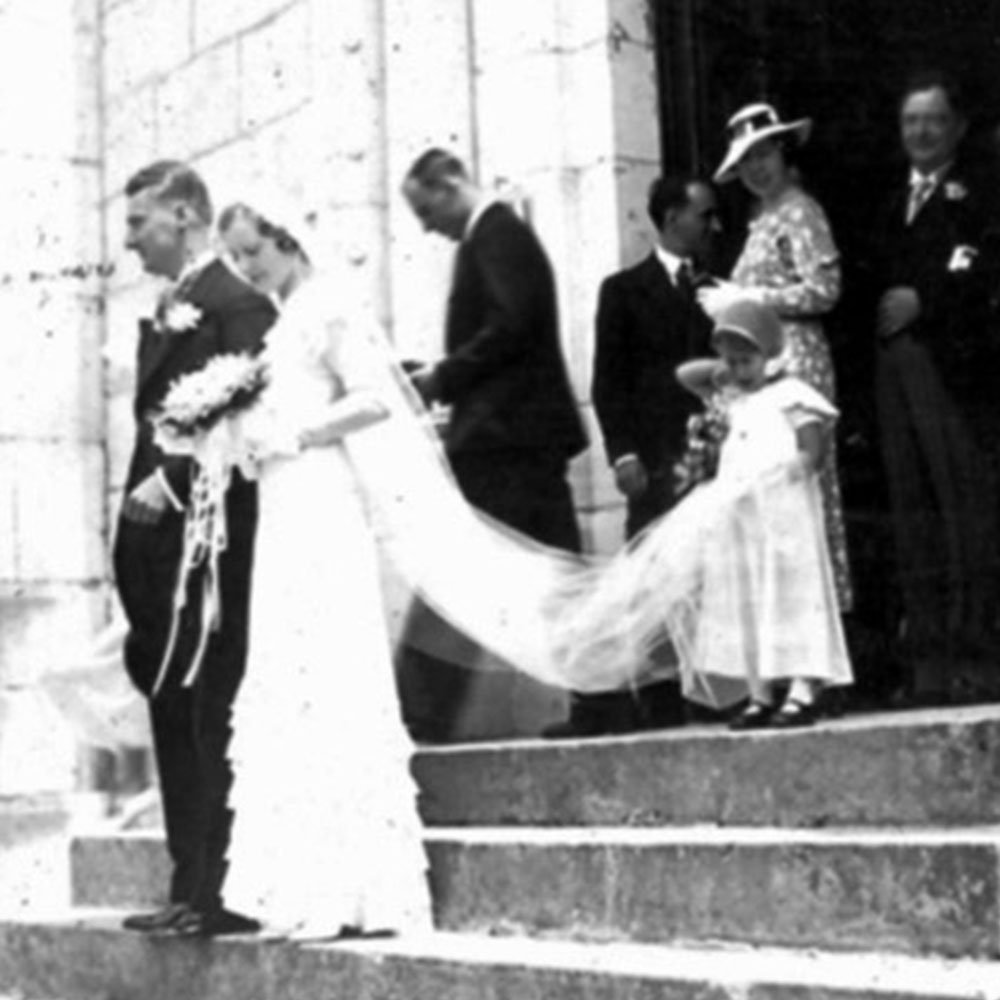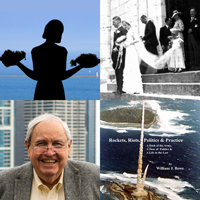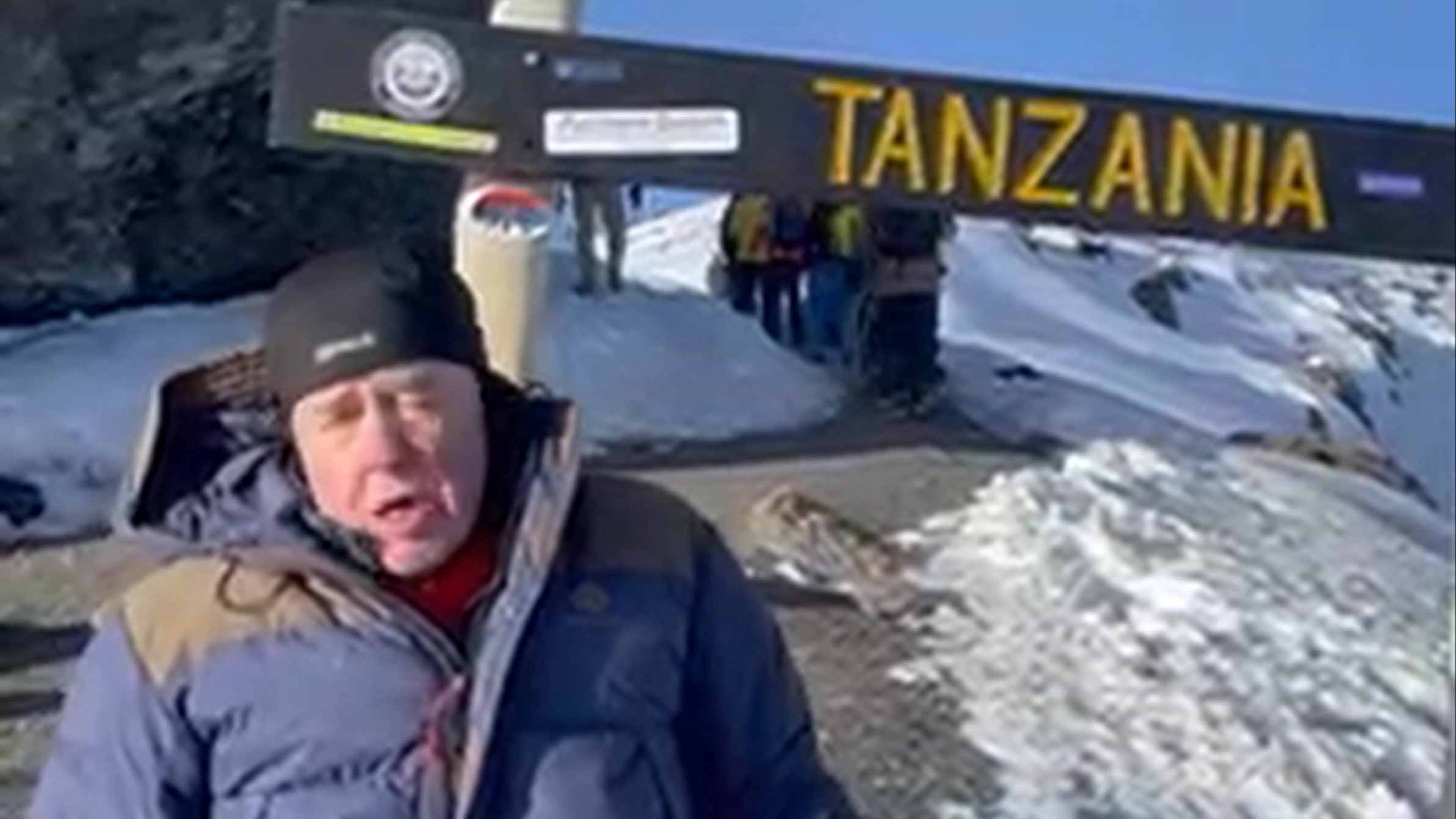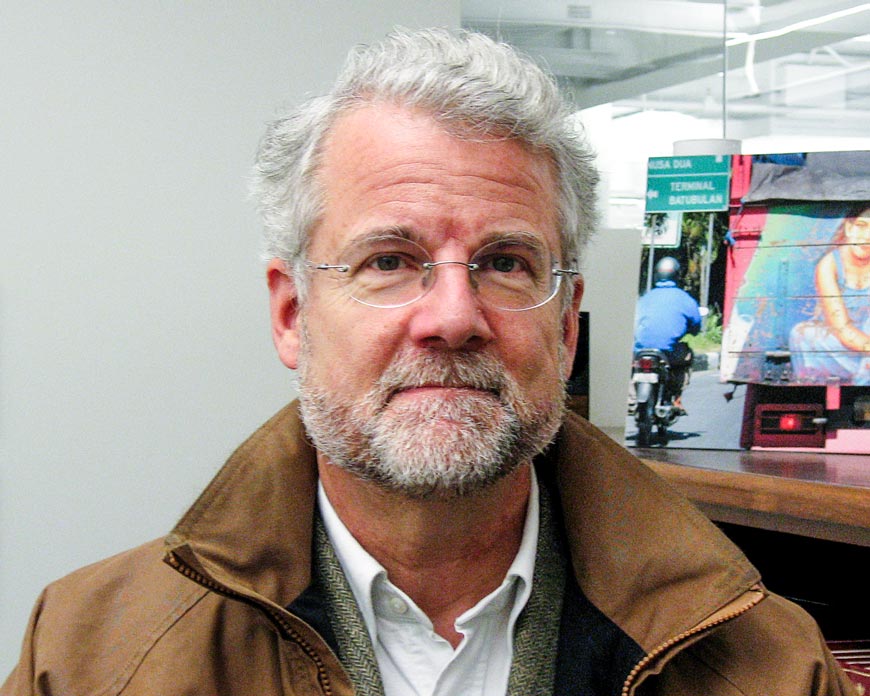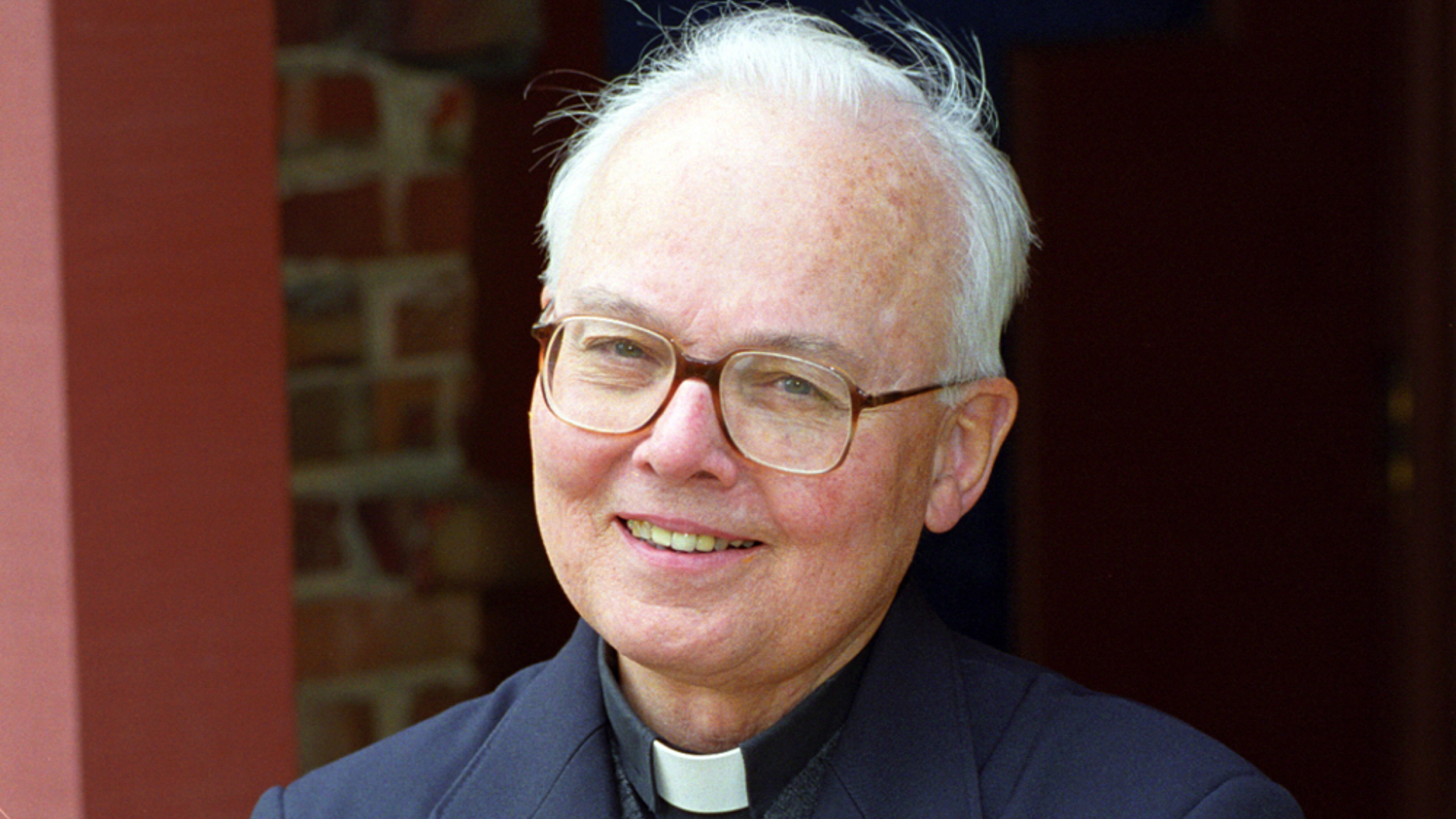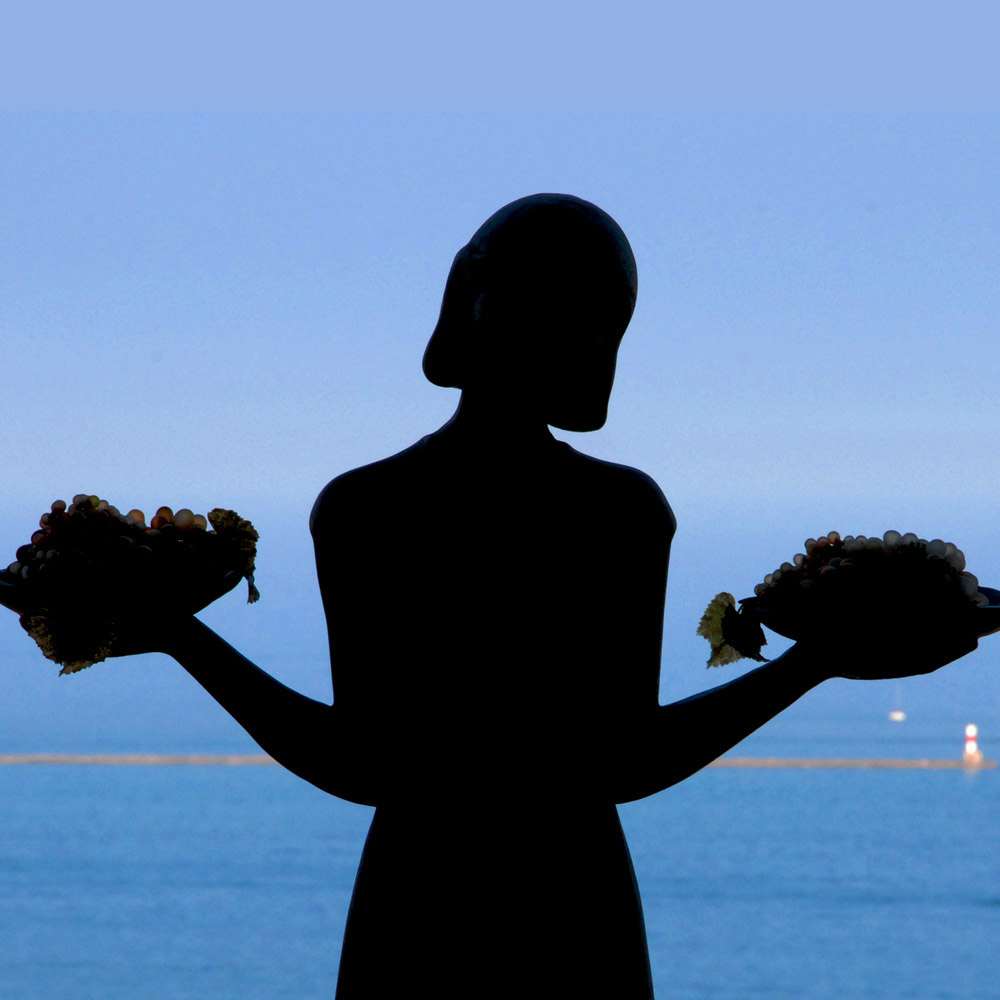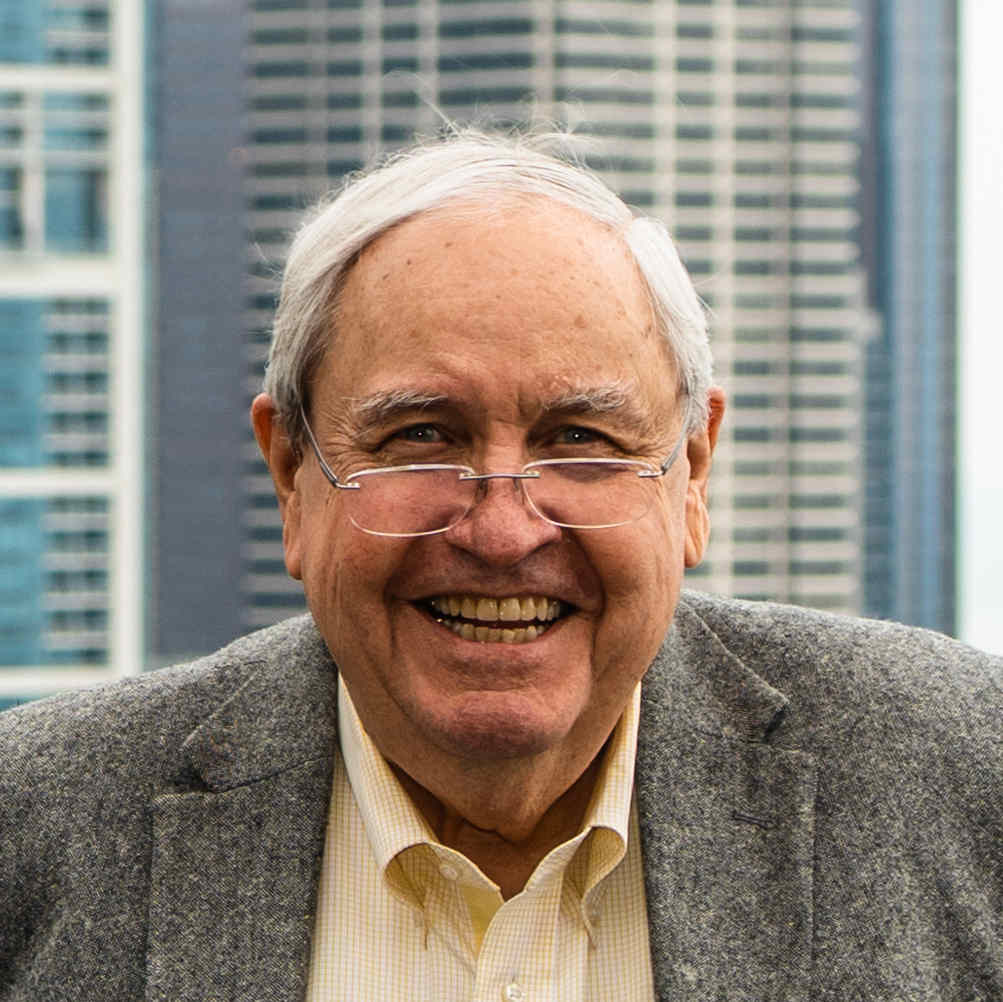Preface
I was delighted when Charley Bowe told me that he had run across a typewritten memoir authored by his paternal grandmother, Julia Lecour Bowe.
I was even more delighted when he asked me to write a preface to help put her reminiscences in the broader context of her long life and extended family.
Charley told me Julia’s discourse covered a period from shortly after her graduation in 1923 from Trinity College in Washington, D.C. (where my mother, Mary Gwinn (Bowe), was her roommate), to the onset of World War II, when Julia and her family gave up their pastoral second home in Palos Park, Illinois.
When I finally had a chance to read the memoir myself, I saw that Julia had focused on how she met, fell in love with, married and lived life through the Roaring ‘20s and the Great Depression with Gus Bowe, my father’s older brother. Julia bore a son and a daughter along the way: John Edward Bowe and Julie Ann Bowe (Thompson).
While Julia clearly had relied on diaries to help recall specifics of her extensive travels during this period, she primarily relied on her memory for her description of life as a young bride and as mother to John and Julie Ann. This latter aspect of her account is chock full of references to her immediate and extended families: the Lecours in Kankakee, Illinois (father Edward, mother Mable (Canavan) Lecour, sister Josephine, known as “Dodie,” Lecour), the Pallissard ancestors of the Lecours in France, Gus and his brother Bill Bowe, Gus’s sister Anna (Bowe) Walters, and their mother, Ellen Canavan Bowe.
Ellen Bowe was also known as “Lib” and was sometimes called “Grandma Bowe” by Julia and my mother in later years. Oddly enough, Ellen Bowe was also an aunt of Julia’s mother Mable, being a sister of Mable’s father James Canavan.
Ellen had married sometime railroad clerk John Joseph Bowe late in the 19th Century. They had three children. Augustine Joseph Bowe, whom everyone knew as Gus, was born in Chicago in February, 1892. My father, William John Bowe, Sr., followed on Christmas Eve, 1893. (My father’s natal day proved to be a mini-disaster to him, as his birthday was always merged into the celebration of Christmas.) Ellen Bowe’s youngest child, Anna, was born in 1896.
Alas, John Joseph Bowe died of either ulcers or tuberculosis when the boys were teenagers and Ellen Bowe was left with no means to support her three children. Not to worry. Grandma Bowe was a formidable woman.
She quickly became a sales representative for a life insurance company and began knocking on doors in the Irish neighborhood of Chicago where they lived. I remember my father telling me that his mother would take him along with her on evening sales calls, where his function was to say nothing and serve as mute testimony to the perils of a breadwinner’s early death without life insurance. He said his mother would tell the man of the house that he if he didn’t have insurance, God forbid, his wife could find herself in her shoes down the road.
Ellen Bowe not only supported her children through her hard work, but, with an eye on the future, and the help of the best parochial schools at hand, she turned her sons Gus and Bill into serious students and early commercial successes.
The boys went to St. Ignatius high school and then Loyola College and Law School in Chicago. My father followed in Gus’s footsteps when he was admitted to the Illinois bar in 1915. The brothers formed the Bowe & Bowe law firm and specialized in the newly developing field of law opened up by the Illinois Workman’s Compensation Act of 1912. In due course, they were supporting their mother and sister Anna, as well as themselves. In a few more years, as Julia describes, Anna distanced herself from her immediate family when she married Raymond Walters, a bank president before the Great Depression, and moved for a time to New Rochelle, New York.
As I recall, 127 N. Dearborn also housed at some point the law office of Gus’s and Bill’s cousin, Austin A. Canavan. Like the Bowe brothers, Austin had his own remarkable law career. Born in Philadelphia in 1852 to Anthony Canavan and Ann (Hughes) Canavan, he had moved with his parents to Kankakee at the age of five. A fine student at St. Viator’s College in nearby Bourbonnais, he went on to get his LLB from Yale Law School in 1876. Settling into a law practice in Chicago, he married Emma Valliquette five years later. The law office of Bowe & Bowe was at 127 N. Dearborn Street in Chicago, directly east of today’s Richard J. Daley Center. I remember visiting the office as a child in the 1940s. Later, before the building was razed to make room for the redevelopment of “Block 37” at the beginning of the 21st Century, I remember it had acquired a pronounced, gravity-defying list to the north. It was a Chicago version of the Leaning Tower of Pisa.
Today, Austin and Emma, Ellen Bowe, Gus and Julia, and my father and mother are all interred at the Canavan family plot at Calvary Cemetery in Evanston, Illinois
The personality traits that drove widowed Ellen Bowe to single-mindedly rise out of poverty and successfully raise three children were not always seen by others as entirely benign.
Julia recounts that the only cautionary word she ever heard as she contemplated marrying Gus came from her father, “He told me that he had been very patient with all of Mabel’s relatives and that I would need every bit of patience I had if I was going to get along with Ellen Canavan Bowe, Mabel’s aunt. He doubted the wisdom of such a decision. If I was eager to go into such an alliance with my eyes wide open to the pitfalls that lay ahead, all right. He would back me up, but it would not be easy, he counseled.”
As it turned out, Julia was quickly confronted with Gus and Bill’s profound solicitude for their mother. When Julia and Gus began their marriage in Chicago in 1926 and bought 4D, a duplex cooperative apartment at 1120 Lake Shore Drive, she found herself living with Gus on the fourth floor, with Ellen Canavan and Bill above them on five. As Julia later reflected, “It was a crazy idea, but I was young and naïve.”
As I was born in 1942, I have no direct memory of Grandma Bowe, who died in 1943. However, in the 1950s and ‘60s, I did try to learn what I could about her from Julia and my mother.
Julia and Mary Gwinn Bowe were sisters-in-law who maintained an unusually strong bond over their lifetimes (as did the brothers they married). They began as college roommates in the 1920s, one from Kankakee, the other from Baltimore. Then, thanks to Julia’s introducing Mary to my father Bill Bowe, they ended up marrying brothers who practiced law together. Julia and Mary both had two children, and both raised their families in fourth floor apartments at 1120 Lake Shore Drive. But wait! There’s more! After both former college roommates were widowed in the late 1960s, Julia sold 4D and moved in with Mary Bowe in her apartment, 4B, on 1120’s other elevator tier. Thus, they spent most of their later years, separately growing old, but as roommates once again. I occasionally joined their partnership at 4B in the late 1960s and early 1970s, usually when on leave from the Army.
In answer to my probing Julia and my mother as to who Grandma Bowe really was, and what exactly the family relationships were like when they were younger, Julia and Mary were pretty much in agreement. They both clearly and completely respected Ellen Bowe. That came through strongly. They expressed nothing untoward or unkind about her in anything they said. However, they both also made it clear that Ellen Bowe had been a powerful presence that loomed over both of their marriages until her death in 1943. My impression was that, whatever the issue, if Lib chose to push it, she nearly always could get the last word with either of her boys. She had single-handedly raised and successfully guided them in their formative years and she was not inclined to be dethroned from that position just because they married nice, well educated, smart young women.
Learning about Grandma Bowe ended up teaching me more about Julia and Mary Bowe’s relationship. It became clear that a major reason for the strength of their lifelong bond arose from the fact that for years they both were in the same boat in having to deal with a very strong-willed mother-in-law. Just as Julia’s father had predicted in 1926, “patience” proved to be a necessary virtue for both of them as they lived in Ellen Bowe’s world.
As comes through from Julia’s description of her family life in wooded Palos Park, Illinois in the 1930s, life by the forest preserve there was a frequent refuge for all of Julia’s extended family. Though I missed Palos entirely, my brother Dick, born in 1938, made it into a few family snapshots taken there.
Since my apartment at 1120 was only an elevator’s ride away from the apartment of Julia and Gus, Dick and I grew up in close proximity to John and Julie Ann, though we were separated from them substantially in age. When John married Kathie Pargellis (daughter of Stanley Pargellis, the Newberry Library’s President), and Julie Ann married Willard Thompson, son of doctors, they seemed ages beyond me in maturity.
With the onset of gasoline rationing in World War II, the Palos Park sojourns went away. Julia’s sister Dodie kept track of her later husband Stanley Freborg, also from Kankakee, when he went off to service in the war. Stan served as a reconnaissance expert in the U.S. Army Air Force flying over Nazi bombing targets in North Africa, Italy and Eastern Europe. Stan later told me he had flown over the Nazi controlled oil refineries in Ploiesti, Romania, first bombed from Benghazi, Libya. His absence gave Dodie more time to spend time with Julia and Gus in Chicago. Pictures of Dodie at Oak Street Beach and on the sidewalk outside of 1120 during this period reveal her as an attractive young woman and quite the fashionista.
After the war, Stan and Dodie lived for a time in an apartment above Julia and Gus on the 17th floor at 1120. I have fond memories of my parents sending Dick and me off alone to the other elevator tier for Dodie’s home cooking when we were young boys. Though they had no children of their own, Stan and Dodie just loved entertaining young folks. Stan, in particular, was endlessly fascinating to Dick and me, as he was given to performing magic tricks that always left our little minds confounded.
I remember being about seven or eight when my mother took me down to the 1120 driveway to say goodbye to Stan and Dodie as they finished packing their car for a new life in Arizona. Stan had been trained at The Art Institute of Chicago and had become a commercial artist, but at this time he hankered to plunge into life as a real estate agent in fast growing, postwar Tucson.
While I never saw the ranch house that they themselves built, Julia and Gus did. On one trip of Julia and Gus to Tucson, the four of them piled into a car and headed due south into Mexico. Pausing for lunch in Hermosillo, they soon reached their destination of Guaymas, on the Gulf of California across from the Baja Peninsula. Rare color photos from this trip record their adventure, highlighted by a bow-tied Gus Bowe, standing with Stan by a bloody trophy fish hung on a dock on the Sea of Cortez.
Dodie’s nephew, John Bowe, also made it to Tucson to visit. One Kodak moment shows him completely into the spirit of the Old Southwest, standing next to Stan with a fine western hat on his head. Before the Freborgs decamped back East, Julie Ann and Willard’s young son Owen even made it out to Arizona to visit.
In the late 1950s, Stan and Dodie moved to Provincetown, Massachusetts on Cape Cod. There they studied under the famous artist Hans Hoffman and plunged into the then current abstract expressionist style of painting. I had a chance to visit them there at their beautiful little white cottage at 6 Cook Street in Provincetown. I later took a break from my studies at Yale to take the train down to New York City to see Stan’s one-man show at a gallery there.
Dodie and Stan returned to Chicago in later years, when Stan resumed his career as a commercial artist. He drew advertisements that regularly ran in Chicago and Midwestern newspapers. They lived this time in another quaint home, one tucked away in a cul du sac at 2347 N. Cambridge Avenue in the Lincoln Park neighborhood.
At the house on Cambridge, they continued to entertain the different generations of Julia’s extended family. Present at one time or another besides Julia and Gus were John and Kathie’s children, Tony, Sandy, Charley and Rob; Julie Ann’s son Owen, and Willard’s mother Phebe and siblings Don and Nancy Thompson; John and Martha Casey and their children Ted and Margaret and Mary Bowe and her son Dick’s children Anson and Alex. My sons, Andy and Pat also enjoyed their hospitality on Cambridge.
Gus and my father Bill Bowe spent their entire lives in private law practice at their law firm of Bowe & Bowe, moving their office in the 1950s to 7 S. Dearborn Street. After World War II, John Casey, yet another Canavan cousin, married my mother’s sister Martha Gwinn, and also joined the firm. Later still, Gus’ son John became a member of the firm before he was chosen Clerk of the Appellate Court of Illinois and later appointed an Associate Judge of the Circuit Court of Cook County. John Casey’s sister, Katherine Lynch provided a bridge to yet more Canavan descendants, as did Canavan cousin John Patrick “Pat” Hanley.
In the mid-1950s, with Poetry Magazine finding its financial legs with help from Gus & Julia’s Palos Park friend Patrick Lannan, Gus was elected President of the Chicago Bar Association (CBA). This was a great honor for a small law firm like Bowe & Bowe and a big new responsibility for Gus.
Julia, possessed of a scholarly bent from childhood, had been taking Spanish courses at Loyola to better appreciate Granada poet García Lorca. Earlier she had taken up the guitar on her own. She had also been fascinated by the discovery of the Dead Sea Scrolls in 1947. As a result, she had begun studying Hebrew. Or was it Arabic, Greek or Aramaic? And that was just in her off time.
Apart from Poetry Magazine, Julia and Gus and my parents had been active from the 1930s in the National Conference of Christians and Jews (NCCJ). The NCCJ, and other organizations they were attracted to over the years, worked against the race discrimination then widely prevalent.
In 1960, Julia was still devoting most of her personal time to the Lower North Center, a private settlement house she helped in the formerly Italian, but then poor black, Cabrini Green housing project. The Lower North Center was just west of the Near North Side where Gus & Julia and my parents lived.
When I reflect on the values lived by Gus & Julia, and my parents in their own way, it seems like there was a simple overarching rule: If something around you seems amiss in a big way, do your little part to fix it. That was sure Julia and Gus.
Gus had been slated by Mayor Richard J. Daley in January 1960 to run on the Democratic ticket as Chief Justice of the Municipal Court of the City of Chicago. When we talked later that year, before I headed off to college, Irish Catholic John F. Kennedy had not yet been endorsed by Daley, nominated by the Democratic Convention or elected President. Given my own interests at the time, I was always eager to talk politics with Gus and quickly asked him about his slating. Gus was a well-known Democrat. He had been active in former Illinois Governor Adlai Stevenson’s second presidential campaign bid against Dwight Eisenhower in 1956 and in Paul Douglas’s successful Illinois Senate Campaign in 1954. Yet Gus had always been miles away from the normal machine politics of the day. His service as President of the CBA had also marked him as an independent person of the law, with integrity, good judgment and the respect of his peers.
Gus said he had no particular idea as to why he was slated by Daley, other than that the Court needed a non-political person capable of restoring trust. The Court had recently been scandalized by bail bond bribery in its traffic court at 325 North LaSalle Street in Chicago.
(Permit me a brief personal aside about this structure. Today I work for Encyclopaedia Britannica, Inc., in this same 1914 warehouse on the Chicago River. In 1915, right after it was built, the building served as a temporary morgue for many of the 844 lives lost in the Eastland Disaster. From the mid-1950s on, the building, now known as the Reid-Murdoch Center, was a City of Chicago office building. It housed the traffic court and other City departments for a half-century, before being recycled in 2005 as a private office building. For some years, it provided offices to the Chicago’s Architectural Landmarks Commission, of which Gus was the first Chairman. Julia Bowe herself worked in the building briefly after being widowed in 1966. In later years, Julia and Gus’s son, Judge John Bowe, periodically worked in this building in the traffic court)
Gus told me he went to see Daley after being put on the ticket to thank him. Then, as now, slating on the Democratic Party ticket in Chicago was tantamount to election. Gus said Daley immediately asked him what part of Germany his family was from. (Daley may have taken Gus as German as he shared a name with Saint Augustine, the Patron of the Divine Word Missionaries. Saint Augustine has a town outside of Bonn, Germany named after him.) Gus said he told Daley he wasn’t of German heritage, he was Irish. According to Gus, Daley began smiling and then, laughing out loud, told Gus to hush up about it, because, “The last thing I need on the ticket is another Irish Catholic!” According to one scholar (see the Epilogue), Daley had been keeping his likely endorsement of the Catholic Kennedy under his hat and, as a result, had slated a conspicuous Protestant, Otto Kerner, for Governor and Samuel Shapiro, a Jewish politician from Kankakee, as Lieutenant Governor. He clearly felt he didn’t need any more Catholics (let alone Irish Catholics) on the ticket than he’d already calculated.
When I returned home to Chicago for law school in 1964, my father’s health was failing. With my mother’s encouragement, I got to know Julia and Gus much better at this time. I would cross the lobby and see them regularly on weeknights, with Julia cooking dinner. Since Gus had been elected Chief Justice of the Municipal Court of Chicago in 1960, and I was now in law school, I was always interested in talking shop with him. At about eight o’clock in the evening, whatever the weather and whatever the state of our conversation, I would usually join him on his ritual walk south from Elm Street to the newsstand at southwest corner of Chicago and Michigan Avenues where he purchased the next day’s editions of the Chicago Tribune and the Sun Times for both of us.
During this period, I also had two wonderful days chauffeuring Julia and Gus about Chicago and Paris. I had been increasingly interested in talking to them both about the family in earlier years and, in particular, how Grandma Bowe had brought up her children. With Gus and Julia both game, one Saturday we piled into my Volkswagen Beetle and set out on a journey to show me the migration of Ellen and her children from Chicago’s West Side, to Streeterville, to 1120 on the Near North Side. Before returning to 1120 that day in 1965, we saw 1239 North Ashland Avenue, where Gus had been born, 2421 West Superior Street, where Bill and Anna were born, their home at 2852 West Fulton Street, 2946 West Walnut Street (around the corner from Frank Lloyd Wright’s famous Francisco Terrace Apartments), the 3220 West Fulton Street house bought in 1910 with a $1,000 legacy Anna received from her paternal grandfather, Moses Bowe, 3240 West Washington Boulevard, and finally, with each home having been progressively better than the last, 227 East Delaware Place in Streeterville in the 1920s.
My other great driving adventure with Julia and Gus was a little bit later, when I happened to be in Paris once at the same time they were. I took them in their rent-a-car to all of their old Paris haunts, beginning with the Saint James and Albany Hotel on the Rue de Rivoli. Their acquaintance from the 1930s, the widower of Mary Ann Smith, Suzzane Smith Ray’s sister, then joined us for diner at a Place Vendome restaurant.
Julia, being of French heritage, spoke very good French. (When Sam Shapiro became the second Jewish Governor of Illinois in 1966, Julia was proud to report he was a former student of hers in French at Kankakee High School.) Due to my own bad French, Julia had a good laugh at my expense on our Paris jaunt. I was doubly in error. I not only made an illegal turn with Julia and Gus in the back seat, but I did it in front of a gendarme. When he asked me for my license, I tried placating him by apologizing in my best schoolboy French, “Je suis très triste.” Julia burst out laughing, and even the gendarme cracked a smile before waving me on. When I later asked Julia what was so funny, she said I had just told the policeman that I was very sad.
As Julia ended her memoir in 1941, when Palos Park faded away, she did not recount her and Gus’s efforts that year to put Poetry Magazine on a solid financial footing by helping to form the Modern Poetry Association, of which Julia was Secretary and Treasurer. Both continued to be active in raising money for Poetry Magazine over the next three decades.
Gus died in 1966, dropping dead on his evening walk. It produced a headline the next day in the Chicago Tribune. The New York Times produced an obituary and Chicago Daily News columnist Mike Royko took time to note Gus’ passing as well.
Before her own death 20 years later, Julia organized their papers and family memorabilia and gifted them to Chicago’s Newberry Library. Today, the 37 boxes that comprise the Augustine J. Bowe Papers are open for research in the Newberry Library’s Special Collections Reading Room.
In 2008, 20 years after Julia Bowe made her gift to the Newberry, an electronic inventory of the Augustine J. Bowe Papers was created with the generous support of the Poetry Foundation. An introduction to the collection contains a short biography of Gus and a lengthy notation describing the files.
The collection of papers Julia put together also contains diaries, family snapshots and even a long playing record of Gus reading a selection of his poetry.
The photos from the 1930s bring alive Julia and Gus’s Palos Park years. The images of the 1940s, ‘50s and ‘60s reflect Julia and Gus’s engagement in supporting Poetry magazine and Gus’s increasing public prominence in improving race relations and the courts. For example, T.S. Eliot is captured before a reading on a Chicago visit to help with fundraising for Poetry. Gus is also separately pictured with Mayor Edward Kelly and Mayor Richard J. Daley. The latter pictures reflected his public role with the City’s Human Relations Commission and later as Chief Justice of the Municipal Court of Chicago and then head of the Municipal Division of the Circuit Court of Cook County.
The Newberry trove also reveals a wonderful eight by ten inch, black and white, glossy picture of Julia with movie star Burt Lancaster. This Hollywood moment was an odd consequence of Gus’s visibility in the fight against racial prejudice and his becoming a judge. I’m probably the only person alive who knows how this came about because, thanks to Gus, when I was 16, I had a similar encounter with Oscar-winning actor Sidney Poitier.
As an opinion leader in racial justice and the law, Gus was occasionally invited to a private screening room atop the Chicago Theater to see pertinent movies when they opened. The Defiant Ones opened in Chicago in 1958. It starred Sidney Poitier and Tony Curtis as black and white escaped convicts who are chained to one another. They learn they must get along together to avoid capture. Gus couldn’t make the movie and asked if I’d be interested in going. The next thing I knew I was in the screening room shaking hands with Poitier, who must have wondered why he was promoting his movie to kids.
In Julia’s case, I’m sure her meeting with Burt Lancaster came about for similar reasons. Lancaster came to Chicago about three years after I met Sidney Poitier. Lancaster was promoting his film about the post-war trial of the Nazi leaders, Judgment at Nuremberg. Of course, in Julia’s case, it was worthies meeting worthies.
The pictures illustrating Julia’s memoir are largely thanks to my mother’s pack rat instincts when it came to family photos and my own inheritance of her pre-emergent digital DNA. Thus, this memoir has many contemporary images of Julia and Gus’s life and the later lives of their extended families. Knowing she lived an extraordinary life with Gus, Julia made sure important parts of it would be accessible for those interested in years to come. Both through the Newberry collection and this memoir, my Aunt Julia has left a worthy legacy for us all.
William J. Bowe, Jr.
Northbrook, Illinois
May 1, 2011

